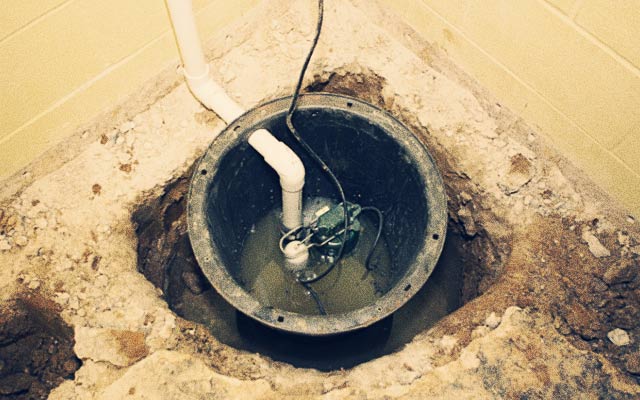As we head into Spring, Toronto residents can look forward to the usual heavy rains and the floods they bring with them. Protecting your home from damage depends on having a good system in place to deal with excess rain or groundwater and backed up drains and municipal sewers. The installation of sump pumps is an important part of these systems because they help get rid of the water while your other equipment prevents it from getting into the home. Here’s what to look for when you’re choosing a sump pump.
How Sump Pumps Work
Sump pumps are small electrical appliances with battery backup that we usually install in a specially-constructed pit at the lowest level in your basement or crawlspace. As the pit fills up with water sensors activate the pump, which pushes the liquid out through the connecting pipes to a designated drainage area a safe distance from the home’s foundations. A valve prevents the water from flowing back along the pipes.
Choosing a Sump Pump
Your local plumber is the best person to advise you on choosing sump pumps because the type of pump needed is usually specific to your situation and requirements. There are some obvious options to choose from, however, especially if you plan to purchase the pump yourself.
- Method of Operation: Manually operated sump pumps are cheaper than automatic ones, but you have to turn them on for them to work. If a flood occurs during the night or while you’re away from home, this can be problematic. So unless you’re absolutely certain manual is practical, choose a pump that activates automatically.
- Pump Power: Most sump pumps operate on ¼ to 1/3 horsepower. The power you choose depends on the extent of your moisture problems because more powerful pumps are able to expel larger quantities of water faster. Evaluate what level of power you need before deciding which pump to buy.
- Head Pressure: This refers to the height to which the pump can push the water, so it depends on how deep your sump pit is and how far the water must be lifted to reach the outlet pipe. A pump offering head pressure of 10 feet, for example, can lift the water to around 9 feet in height allowing for a loss of 10% due to the physical limitations of the pipes.
- Power Supply: Residential sump pumps operate on standard 110-volt electrical power, and a good pump has a battery backup to ensure it remains operational even during the power outage that can accompany a severe storm. The pump needs to be connected directly into a ground fault circuit interrupter and not into an extension cable.
- Backup Alarms: By installing a backup alarm that alerts you when your flood prevention system is activated, you’ll be able to monitor its performance and ensure that it works efficiently. In addition, you’ll need to reset the system after use before you can use large quantities of water in the home because after using the backflow prevention valve will be closed and will stop the water from leaving the location normally. This can cause a “local” flood in your home.
Installing Your Pump
Sump pump installation is a specialized job and we don’t recommend you doing it yourself unless you have a plumbing qualification. Rather, contact your local plumber for an estimate on the installation and ensure that the work is done according to the City’s strict building codes.
Maintenance Basics
As with all electrical equipment, you need to conduct basic maintenance on sump pumps to make sure they are working well when you need them. Pour a bucket of water into the pit occasionally to see if the pump activates and disposes of it normally. Clean the grate and make sure the area isn’t clogged with debris. Have the pump serviced once a year ahead of the flood season to get all the moving parts lubricated after the winter freeze, and test the backup battery occasionally to see if there’s sufficient strength to operate the pump during a power outage.
These measures will help you to keep your home safe during the heaviest flooding and avoid the inconvenience of water damage, higher insurance premiums, and heavy deductibles.

